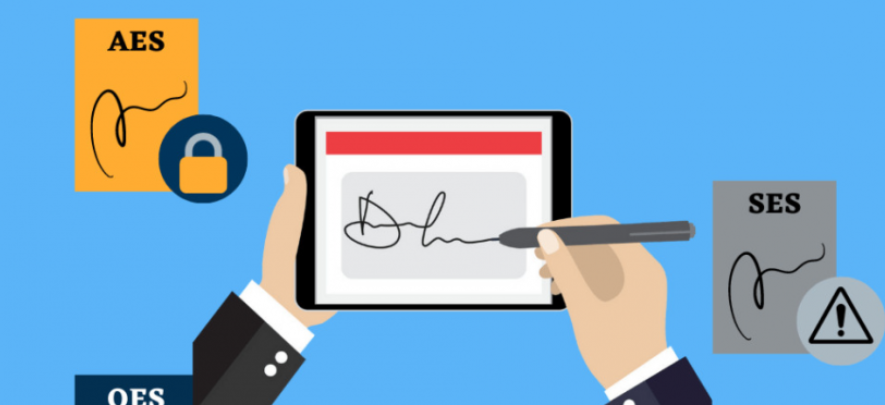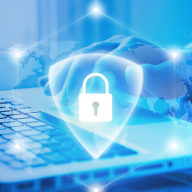A Brief Guide to the Different Types of Electronic Signatures

Digital & Technology
101 week ago — 6 min read
Did you know there are many ways to sign digital documents with electronic signatures (e-signatures)? An e-signature simply refers to a method to attach the signer’s identity to one or more documents. It offers a convenient, efficient, and secure solution to protect documents in an increasingly paperless world.
If you want to sign your digital documents, you should know the various types of e-signatures that are available. This knowledge can help you choose the right type of signature for your document workflows and requirements.
Do keep in mind that e-signatures and digital signatures are not the same thing. In fact, a digital signature is a specific type of secure e-signature that cryptographically authenticates documents with the help of an algorithm.
Ready to learn more about the main types of electronic signatures? Let’s get started!
Simple Electronic Signature (SES)
SES is the simplest types of electronic signature and a popular choice for e-signing documents like contracts and agreements. It refers to electronic data that’s attached to other data and used by signatories to sign their digital documents.
SES does not use cryptographic encryption or authentication. It also doesn’t require identity verification from the signer. Instead, it relies on the signer’s intention to sign the document in order to prove its validity and authenticity. Further, the individual accepting the document is responsible for trusting the signer and accepting the document.
Although easy to use and acceptable in legal settings (including courts), SES is fairly easy to falsify. This increases the chances of fraud. This is because there are very few security protocols to confirm the signer’s authenticity or verify the document’s validity. That’s why, in situations with more stringent authenticity/validity criteria, SES is not a good e-signature choice.
Advanced Electronic Signatures (AES)
AES requires identity verification where SES does not. This type of electronic signature is based on digital certificates and typically certified by a Certificate Authority (CA). AES uses Public Key Infrastructure (PKI) to create, manage, distribute, use, store, and even revoke these digital certificates and associated public keys. The certificates uniquely identify the document signer/sender to authenticate them and verify that the document is valid. Also, the sender’s identity is confirmed before the signature can take place.
AES reduces the risk of fraud by ensuring that only the intended signer can access and/or sign a document such as a legal contract. It is much more secure than both paper signatures and SES. Further, AES is transmitted in a way that provides evidence such as audit trails which helps track and authenticate the transmitted document and its data.
Qualified Electronic Signatures (QES)
QES is an even more advanced version of AES since it meets the additional requirements outlined in the eIDAS (electronic IDentification, Authentication and trust Services) regulations. Some of these requirements are:
- The e-signature must be uniquely linked to the signatory
- It should identify the signatory
- It should be created using electronic signature data that the signatory can confidently use
- It should be associated with the signed data so that any changes in the data can be detected
Furthermore, the eIDAS also specifies the requirements for the device upon which the signature will be provided. An EU-authorised CA must provide the device which will then be used during the signing process.
Since this e-signature includes both a digital security protocol and a device that allows for signatures to be created, it is more secure than SES and AES. It ensures the authenticity and integrity of signed documents, and reduces the risk of fraud and tampering. Finally, QES helps strengthen the non-repudiation characteristics of a digital contract or proposal.
How to Choose the Right e-Signature
So, which type of e-signature should you choose? There is no right or wrong answer to this question.
Your choice would depend on your document workflows and specific needs. Ideally, you should select the e-signature that provides a balance between legal enforceability and ease of use.
Before choosing an e-signature, keep in mind that the legality of e-signatures is determined by the signer’s intent (to affix their identity to a document), consent between all involved parties, accurate records that explain the method used to affix the signature, and the retention and reproducibility of these records.
Furthermore, make sure that the e-signature can demonstrate the security of the signed document and show that it can help prevent document tampering. Factors like audit trails and evidence of authentication should also guide your final decision.
Also read: How to apply for Digital Signature Certificate & its benefits
To explore business opportunities, link with us by clicking on the 'Connect' button on our eBiz Card.
Disclaimer: The views and opinions expressed in this article are those of the author and do not necessarily reflect the views, official policy or position of GlobalLinker.
Posted by
Lion Amir ViraniTech Evangelist| Thought Leader | Social Entrepreneur | Enthusiastic Networker | Speaker| Startup Mentor
Most read this week














Comments
Share this content
Please login or Register to join the discussion